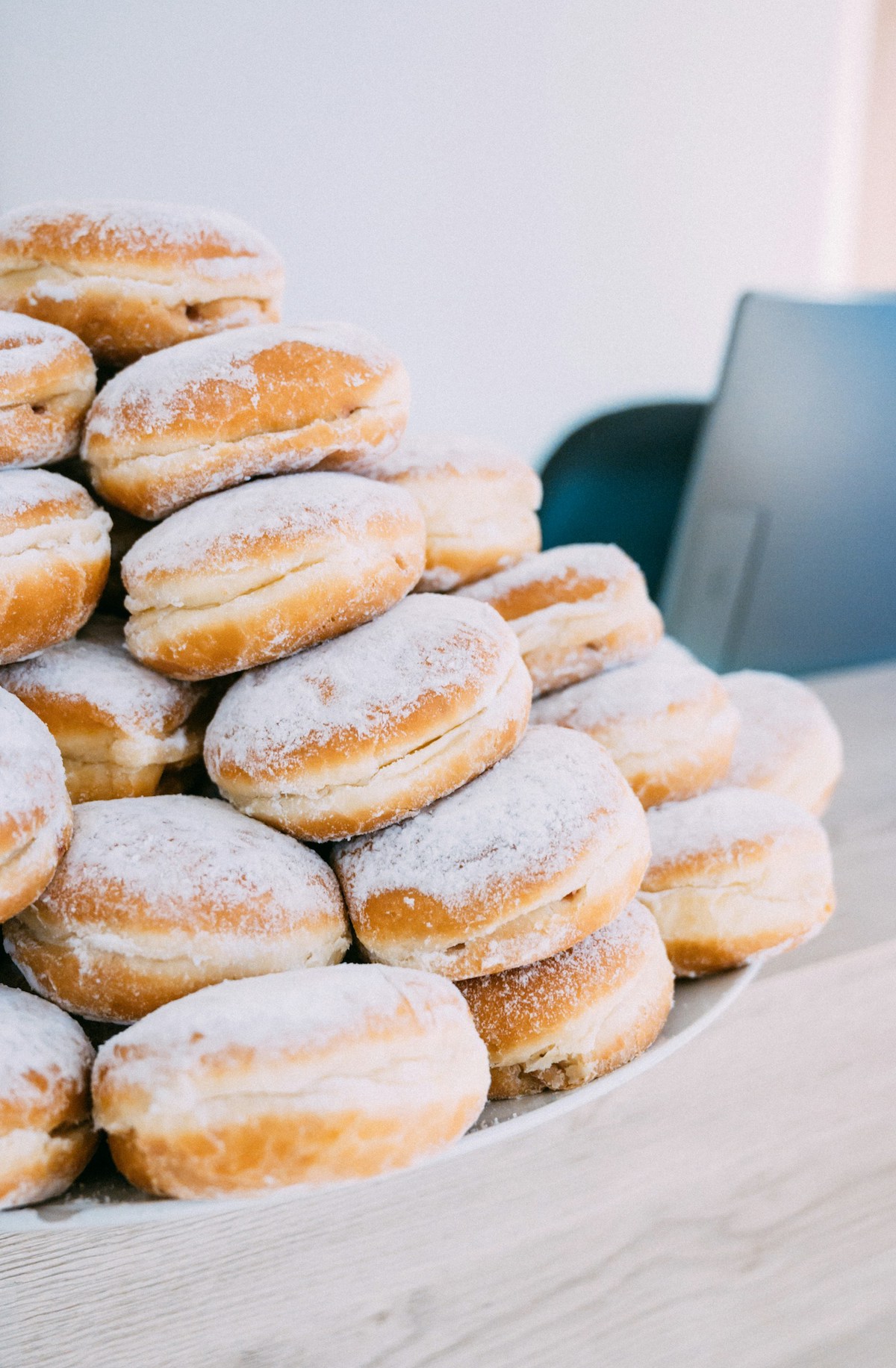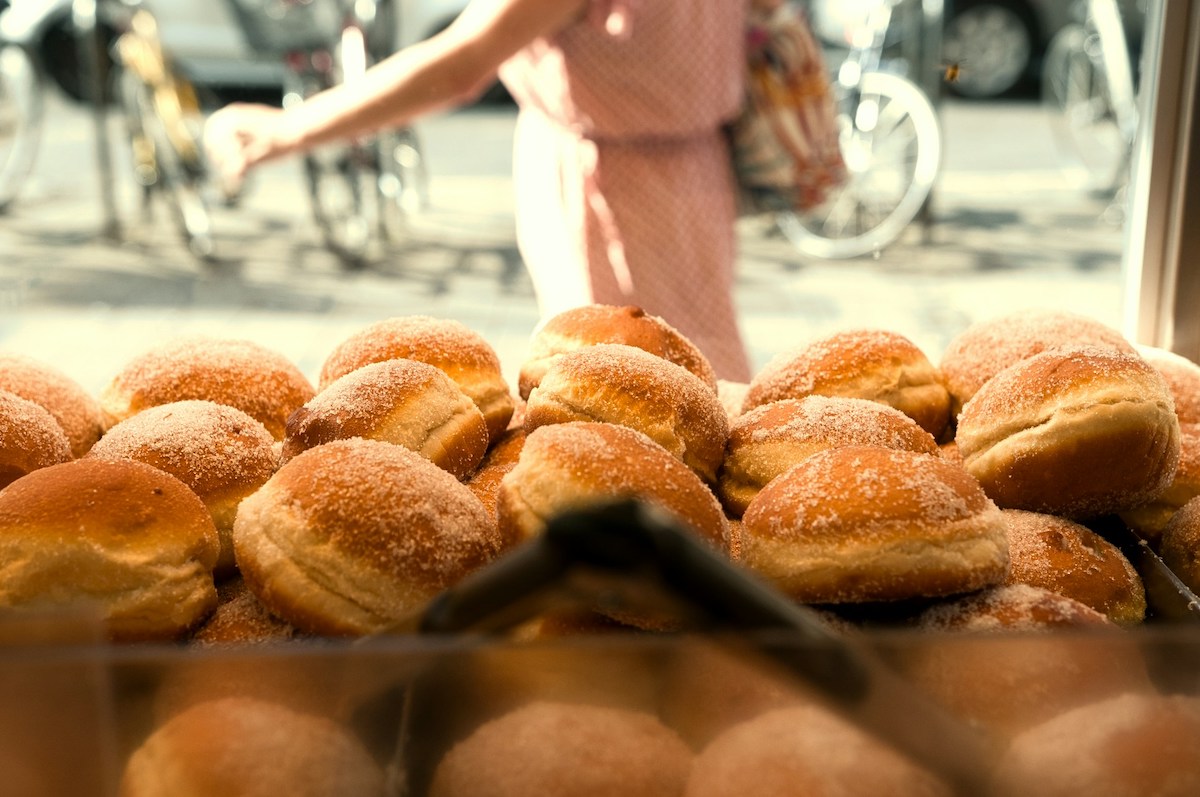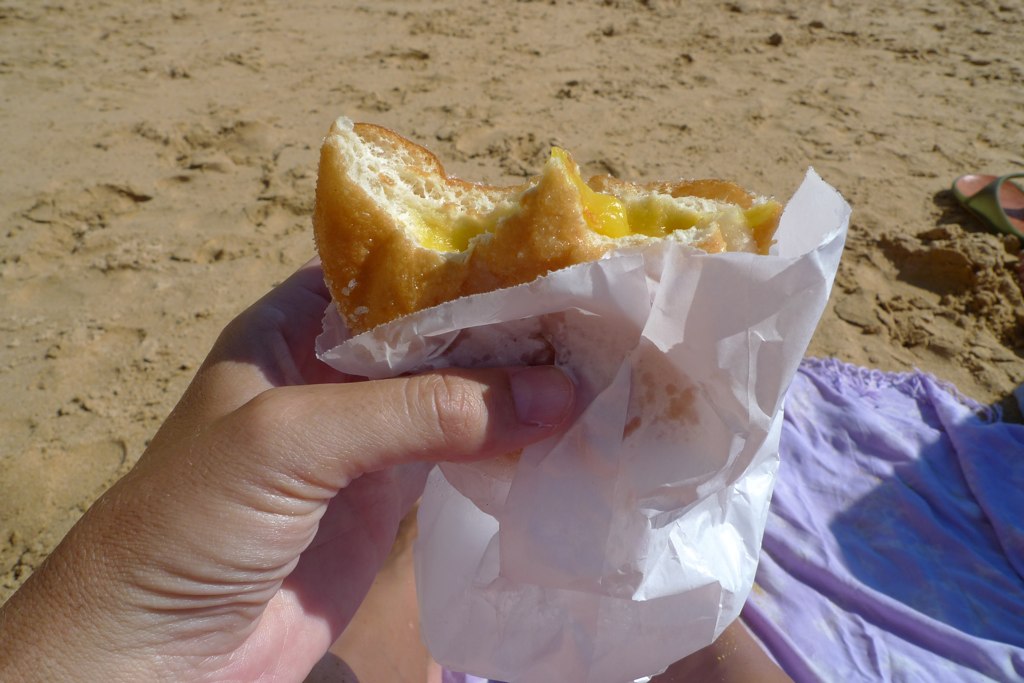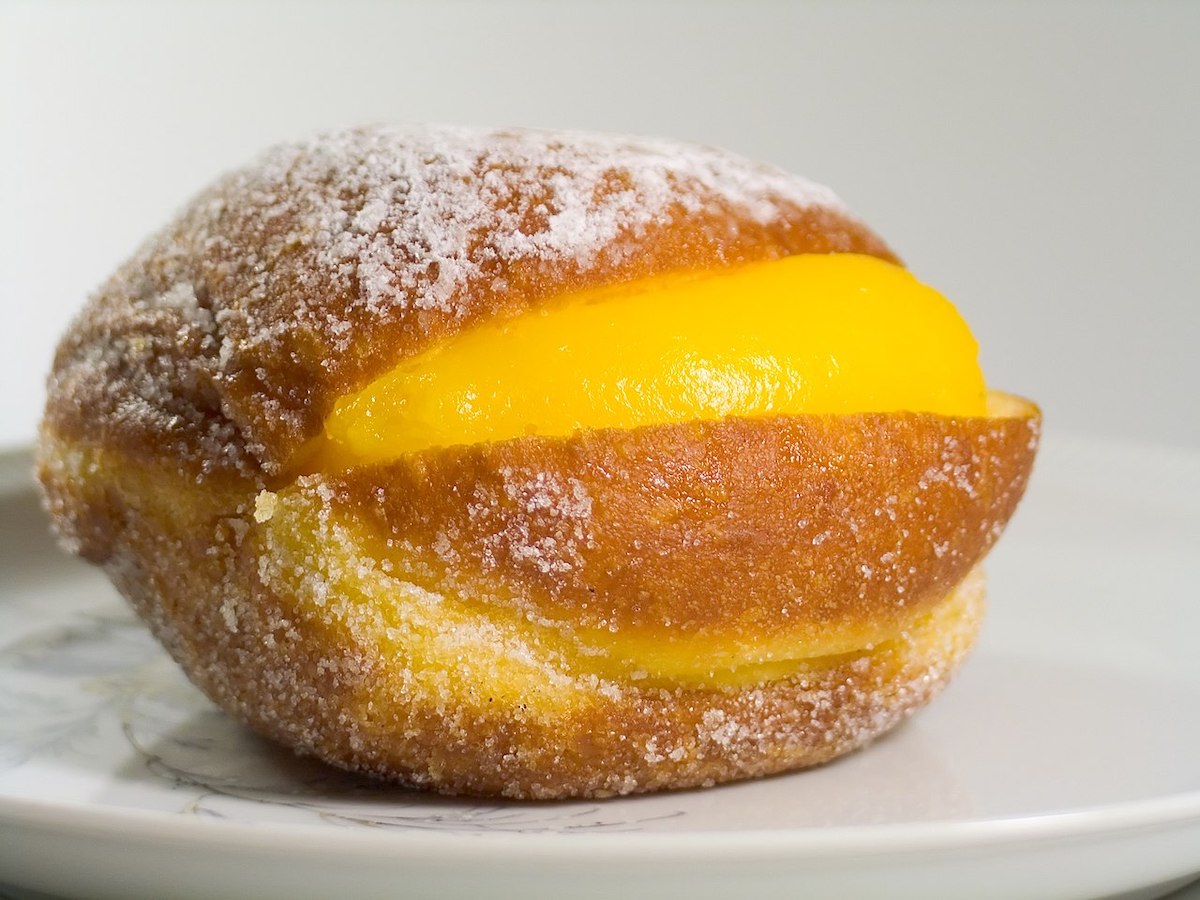Last Updated on January 5, 2026 by Emma Fajcz | Published: July 4, 2024
It’s no secret that Portugal has a thing for pastries. You’ve probably heard of pastéis de nata, those iconic custard tarts that are at the top of every traveler’s list. But if you’re visiting Portugal – especially in summer – there’s another treat that you absolutely have to try: bolas de Berlim.
These sugary, fluffy, custard-filled buns are available year round, but they’re particularly popular as a summertime snack on the beach. That may sound strange… but allow us to explain and we can assure you that you will not want to miss them on your next trip to Portugal.
Here’s everything you need to know about bolas de Berlim, from their origins and ingredients to the best places to try them in Lisbon.

What's Included
What are bolas de Berlim?
Let’s start with the name. In Portuguese, bola means “ball,” and Berlim means “Berlin,” as in the capital of Germany. If you’ve ever heard the urban legend about John F. Kennedy accidentally calling himself a jelly doughnut while giving a speech in Berlin, you might be familiar with the fact that the word Berliner refers to a certain German pastry (as well as a person from Berlin).
A German Berliner is essentially a hole-less yeast doughnut, usually with fruit jam in the middle, which bears a strong resemblance to the Portuguese bola de Berlim. The main difference is that, in Portugal, it’s traditionally filled with a thick yellow custard (creme de ovo) rather than jam. It’s also usually covered in a generous layer of granulated sugar.
Modern bolas de Berlim come in other varieties, too. The most common of which is stuffed with chocolate and hazelnut spread, instead of creme. They’re sometimes also available without filling (simples), or with Kinder Bueno cream.
If you ever come across a version with dark brown alfarroba (carob) mixed into the dough itself, we highly suggest giving it a try.

A brief history of bolas de Berlim
So, how did the “Berlin ball” become such an icon of Portuguese culture? This pastry supposedly has its roots in World War II, when many German Jews fled to Portugal (which remained a neutral country throughout the conflict). According to historians, they brought the recipe for filled and sugar-coated doughnuts with them and recreated it on Portuguese soil.
Like many modern residents of Portugal, these wartime refugees apparently spent quite a bit of time by the sea – especially during the scorching summers – and the tradition of eating bolas de Berlim on the beach was born.
Over time the recipe evolved, and the original fruit filling was replaced by egg custard: a core element of many classic Portuguese desserts.

Sun, sand, and sugar: Bolas de Berlim on the beach
Today you can find bolas de Berlim in many cafés and supermarkets. However, the most common place to enjoy them is still on the sand – a unique tradition that makes summer days just a little bit sweeter. But, we’re not suggesting that you bring a case of bolas de Berlim in your bag. For the full experience, you have to buy them once you’ve already arrived at the beach.
Along with the crashing waves and the sea breeze, there’s another sound you’re likely to hear on Portuguese beaches during summer. Keep your ears open for the singsong voices of vendors who walk along the sand announcing their goods to beachgoers with a classic phrase: Olha a bolinha! (Literally, “Look at the little ball!”)
Flag a vendor down and dig up some coins to purchase a fresh bola de Berlim from the large coolers they carry up and down the beach. More often than not, that’s all they’re selling. No water, no soda, no healthy snacks. Just perfectly soft and sugary doughnuts with a generous dollop of creme de ovo in the middle. If you’re visiting Lisbon on a budget, this is definitely an extraordinary must for a typical snack.

Where to find the best bolas de Berlim in Lisbon
If you’re looking for the best bolas de Berlim in Portugal, head to a popular beach during summer. There, look and listen carefully for vendors.
This may not seem like the simplest solution, but there’s something special about the pastries that come out of those coolers. Maybe it’s just the power of tradition, or the idyllic seaside setting, but they always seem to taste better. Make sure to check Lisbon’s tram service to reach different beaches.
Of course, this isn’t always possible. Luckily, you can also find delicious bolas de Berlim all year round at some of the best bakeries in Lisbon. Try the ones from Sacolinha, which come with the classic creme, or caramel-colored doce de leite. You can also order them straight to your door from Bolas da Praia. And for a plant-based version, try the ones from Gupi Vegan Pastry.
If you are feeling adventurous but can’t make it to Portugal, you can try making them at home. Keep in mind that you’ll need to make the custard from scratch, let the dough rise, and deep-fry the doughnuts. It may be a bit of a project, but it’s totally worth it. You’ll get a taste of this sugary symbol of Portuguese summers past and present.

If you’re traveling to Lisbon, why not sign up for one of our food tours? You’ll get to explore the city with a group of other food lovers, led by an expert guide who knows all the local secrets. It’s the perfect way to pack all of the most delicious highlights into just a few hours!








